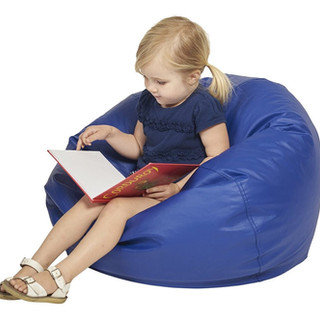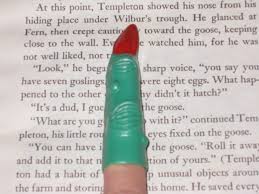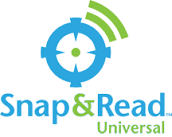Supporting Kids with Reading
- Alescia Ford-Lanza

- Oct 9, 2017
- 3 min read
Updated: Oct 19, 2018

I'm not a reading specialist. I'm not a language arts teacher. But as an Occupational Therapist and Assistive Technology Specialist, the majority of referrals for evaluation and therapy involve literacy concerns. Just like our post on writing, reading is another complex cognitive process that is multi-faceted so interventions often cross over between clinicians and specialists.
When you pick up a book to read, you are using fine motor control to hold it upright, turn the pages, and maybe even follow along with your index finger as you read. Your visual acuity is intact (you can see the letters!) and your ocular motor skills have developed enough to smoothly scan the letters, words, and sentences across the page without losing your place. Both eyes are moving in coordination and in isolation from your head while reading and referencing pictures. Cognitively, you've developed the skills to automatically apply letter/sound relationships, decode multisyllabic words, comprehend (understand) what you're reading, and read between the lines (inferencing). If you're reading aloud, you're reading with appropriate fluency, pacing (speed of reading), and voice modulation (prosity, intonation, voice inflections).
Overwhelmed yet?
Amazingly, all of these processes develop to the point of automaticity and reading skills to develop to maturity...that's if all goes according to plan! When there is a skill breakdown in any one part of this process, the integration of all of these skills is impacted and readers can struggle. This guide from CALL Scotland shows all that goes into reading and what strategies or supports to consider:
How to Support OT-related Reading Skills with AT Solutions
Some of the most common referrals for intervention are for the following concerns so we've given you a "try it at home" list of strategies to help you support your child's skills:
If your child has difficulty holding the book, manipulating the pages, or using her "helper hand" to stabilize the pages, try:
A slantboard surface to prop the book- we LOVE this IKEA tablet stand for an affordable slantboard
E-text on a tablet for ease of swiping to turn pages
Use of "watching eyes" on the non-dominant hand to prompt the helper hand to actively participate in reading
Explore flexible seating options that provide more support to your child's core musculature. They're working hard with reading, so sometimes it helps to be in a more supportive, stable position than a regular chair might allow for.
If your child has difficulty smoothly reading across a line of text, jumps around, or loses her place often, try:
A reading window (if reading on Chrome, try the Visor Chrome Extension!)
A finger flashlight to promote visual attention and tracking across the page
A fingertip toy (i.e. a witch or monster finger!)
Block excess material - just focus on one line of text at a time
Try propping the book up on a slantboard surface so it's stationary and supported
If issues with decoding and fluency are affecting comprehension, work to support your child's understanding of text with these AT solutions:
Text-to-Speech software programs like ReadWrite for Google or Snap&Read Universal allow your child to follow along as an electronic reader highlights each word and reads the text aloud. This audio-reading allows the child to hear what is being read, therefore building on auditory strengths to support understanding.
Audio e-books - books are available on tablets or mobile devices that allow your child to follow along onscreen while a recording of the text plays. These are often available from your public library and some iOS apps offer interactive e-books that cater to kids.
Audiobooks - services like Bookshare (free for qualifying users) and Audible, as well as most public libraries, offer audiobooks that appeal to auditory learners for overall comprehension of material. These may or may not offer the text/print along with audio playback.
Tips and Takeaways
Reading is a complex process and there is a lot involved in helping your child feel like a successful reader. Talk to your child's teachers about the fun ways they target these reading-related skills in the classroom. It may be as simple as a fun monster fingertip to help your child follow the lines of text! Let the specialists work on the ins and outs of teaching your child to read, but feel free to give some of these low-tech supports a try to engage your young reader at home in a positive way!

























